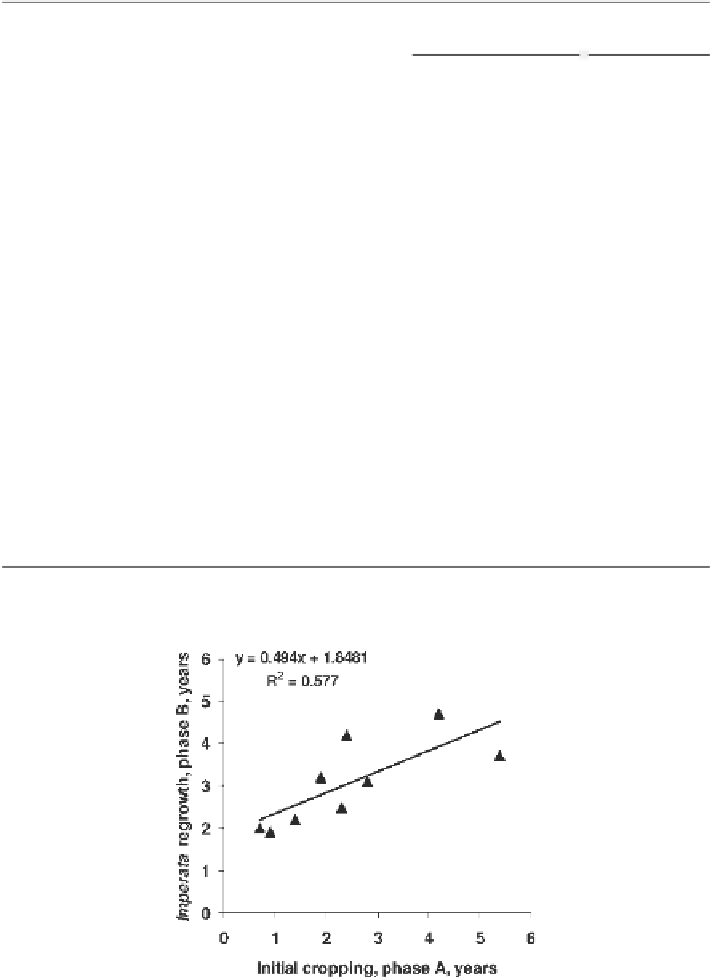Agriculture Reference
In-Depth Information
Table 6.4
Length of time available for food crops and
Imperata
regrowth (stage A and B, respec-
tively, in Fig. 6.1) and the stem basal area needed to reduce light at crop level to 50 percent and
at
Imperata
level to 15 percent as transition points for phase A and B (the measurements refer to
Purnomosidhi et al. 2005)
Tree species
S = simula-
tion, M =
measure-
ment
Weeding
Tree
spacing
Basal area
(m
2
ha
−1
) at
Time (years)
50% light
at
Imperata
level
15% light
at
Imperata
level
A
B
A + B
Acacia
mangium
S
No weeding
Narrow
a
-
-
Wide
b
-
-
Partial weeding
Narrow
0.6
13
0.9
1.9
2.8
M
Wide
0.7
10.6
1.4
2.2
3.6
-
Narrow
2.1
10
Paraserianthes
falcataria
S
No weeding
Narrow
2.9
15.4
2.3
2.5
4.8
Wide
2
11
5.4
3.7
9.1
Partial weeding
Narrow
1
12.1
0.7
2.0
2.7
Wide
1.7
9.4
1.9
3.2
5.1
M
-
Narrow
3.7
16.9
Hevea brasil-
iensis
S
No weeding
Narrow
-
-
Wide
-
-
Partial weeding
Narrow
1.1
6.4
2.8
3.1
5.9
Wide
0.8
5.9
4.2
4.7
8.9
M
-
Narrow
2.1
8.4
Swietenia
macrophylla
S
No weeding
Narrow
-
-
Wide
-
-
Partial weeding
Narrow
1.4
10.5
2.4
4.2
6.4
Wide
1.6
23.7
4.1
>10 >15
a
narrow (timber trees: 4 × 2, 3 × 3, 4 × 4 m; rubber: 6 × 3, 5 × 3, 4 × 4 m)
b
wide spacing (timber trees: 8 × 4, 8 × 8 m; rubber: 6 × 6, 12 × 6 m)
Fig. 6.8
Relationship between predicted length of the
Imperata
regrowth window (Phase B) in
relation to the predicted length of initial cropping period (Phase A, as in Fig. 6.1), across different
tree species, planting patterns and weeding regimes (data in Table 6.4)

Search WWH ::

Custom Search